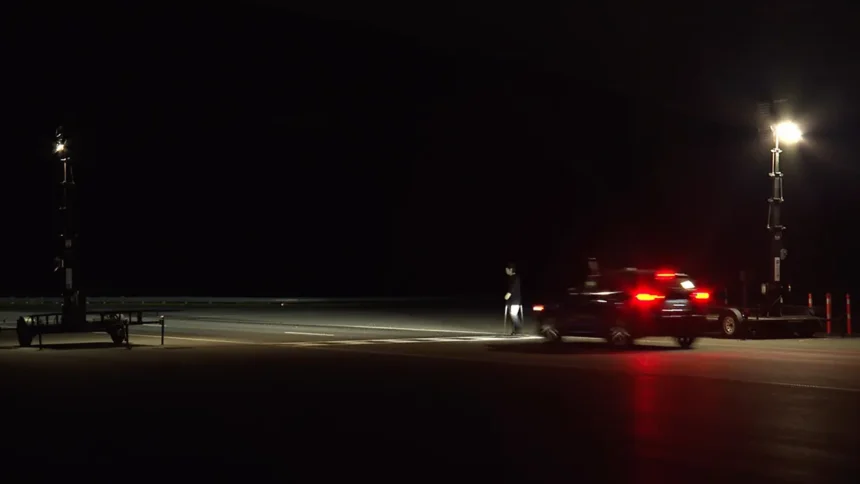Reflective clothing has long been touted as a way to make pedestrians more visible to human drivers, especially at night. However, a new study from the Insurance Institute for Highway Safety (IIHS) suggests that this may not always be the case when it comes to automatic emergency braking (AEB) systems in vehicles.
The study found that the placement and motion of reflective strips on clothing, such as jackets and pants, can actually confuse the sensors of pedestrian AEB systems. While these strips may help human drivers quickly recognize the movement of a person, they can make pedestrians virtually invisible to AEB systems, which rely on different technology.
This revelation is particularly concerning given that AEB systems have been shown to reduce pedestrian fatalities by 27% overall, but their effectiveness at night is limited. In response to this, the IIHS has updated its safety ratings to emphasize the nighttime performance of these systems.
To further investigate the impact of reflective clothing on AEB systems, researchers conducted tests using adult dummies dressed in various outfits, including those with reflective strips. The results showed that vehicles like the Honda CR-V and Mazda CX-5 were more likely to hit the dummy when it was clad in reflective clothing, compared to when it was dressed in dark clothing.
Interestingly, the Subaru Forester performed better in the tests, managing to avoid collisions in most scenarios, even when the dummy was wearing reflective clothing. This highlights the fact that not all AEB systems are created equal and that performance can vary depending on the vehicle model.
In light of these findings, the IIHS is calling for further research to better understand why some AEB systems are affected by reflective clothing and to determine if other automakers’ systems face similar issues. With a recent spike in pedestrian deaths on U.S. roads, addressing this issue is more important than ever.
Fortunately, new federal safety regulations are set to go into effect in 2029, which will establish minimum performance standards for AEB systems. This is a crucial step towards ensuring the safety of pedestrians and reducing the number of collisions on our roads.
In conclusion, while reflective clothing may help pedestrians be seen by human drivers, it’s important to consider how it may impact the effectiveness of AEB systems. By continuing to research and improve these systems, we can work towards a safer future for all road users.





